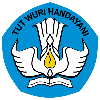Desain Aplikasi Penjadwalan Menu Makan Siang Karyawan Menggunakan Pendekatan Design Thinking dan SUS Testing
Kata Kunci:
penjadwalan menu makan siang, aplikasi penjadwalan, design thinking, system usability scale, lunch menu scheduling, scheduling applications, design thinking, system usability scaleAbstrak
Penjadwalan adalah pengalokasian sebuah kegiatan dengan memperhatikan urutan waktu pelaksanaan dan ketersediaan sumber daya yang terbatas. Pada kasus menu makan siang karyawan di sebuah perusahaan, jadwal menu makan siang ini dapat berubah setiap hari dalam kurun waktu satu minggu dengan menyesuaikan ketersediaan sumber daya yang dibatasi oleh pengelola perusahaan. Melakukan penjadwalan menu makan siang berulang secara manual tentu akan membuang banyak waktu, dibutuhkan suatu aplikasi untuk melakukan penjadwalan secara otomatis. Perancangan sebuah aplikasi penjadwalan untuk menu makan siang menggunakan metode pendekatan Design Thinking menerapkan 5 tahapan, yaitu Empathize, Define, Ideate, Prototype, dan Testing. Hasil dari perancangan ini adalah sebuah desain aplikasi yang kemudian di evaluasi menggunakan System Usability Scale (SUS) untuk mengukur kepuasan pengguna. Dimana data kepuasan pengguna diperoleh dengan metode form collecting menggunakan media JotForm yang dikirimkan kepada 30 responden. Hasil skor SUS sebesar 80,2 yang artinya secara usability desain dapat diterima atau layak.
Unduhan
Referensi
A. A. Chandra, “Penerapan Media E-book terhadap Pemilihan Makanan Jajanan,” J. Kesehat., vol. 6, no. 6, pp. 9–33, 2020, [Online]. Available: http://eprints.poltekkesjogja.ac.id/1134/4/4. Chapter 2.pdf.
R. Khoirotun, “Kajian Kesesuaian Standar Porsi pada Menu Makan Siang Lauk Hewani, Lauk Nabati, dan Sayur di SD Unggulan Aisyiyah Bantul,” Univ. Muhammadiyah Semarang, pp. 5–6, 2016.
O. World Health Organization, World Bank Group et al., “No 主観的健康感を中心とした在宅高齢者における 健康関連指標に関する共分散構造分析Title,” World Heal. Organ. World Bank Group, OECD, no. July, pp. 1–100, 2014, [Online]. Available: http://elibrary.almaata.ac.id/1714/%0Ahttps://osf.io/yejcm/%0Ahttp://elibrary.almaata.ac.id%0Ahttps://bmjopen.bmj.com/lookup/doi/10.1136/bmjopen-2019-030624%0Ahttps://ppjp.ulm.ac.id/journal/index.php/JPKMI/article/view/2758%0Ahttp://stikara.ac.id/jupermik.
Wiadnyani, “Teori Siklus Menu,” J. Mater. Process. Technol., vol. 1, no. 1, pp. 1–8, 2018, [Online]. Available: http://dx.doi.org/10.1016/j.cirp.2016.06.001%0Ahttp://dx.doi.org/10.1016/j.powtec.2016.12.055%0Ahttps://doi.org/10.1016/j.ijfatigue.2019.02.006%0Ahttps://doi.org/10.1016/j.matlet.2019.04.024%0Ahttps://doi.org/10.1016/j.matlet.2019.127252%0Ahttp://dx.doi.o.
A. Lubis and N. Pardede, “Penjadwalan Tenaga Kerja Hse Menggunakan Metode Monroe Di Sumur Eksplorasi Tambun Pt Pertamina Ep,” Gaung Inform., vol. 9, no. 3, pp. 187–194, 2019.
I. Adhiya Adha et al., “PERANCANGAN UI/UX APLIKASI OGAN LOPIAN DISKOMINFO PURWAKARTA MENGGUNAKAN METODE DESIGN THINKING,” JOISIE J. Inf. Syst. Informatics Eng., vol. 7, no. 1, 2023.
Mh. Abdurrohman, D. Setiawan, L. Trisnawati, U. Suska Riau, and U. Abdurrab, “MODEL RANCANGAN APLIKASI PROMOSI USAHA REMPAH MENGGUNAKAN DESIGN THINKING,” JOISIE J. Inf. Syst. Informatics Eng., vol. 5, no. 1, pp. 29–36, 2021.
F. Fariyanto and F. Ulum, “PERANCANGAN APLIKASI PEMILIHAN KEPALA DESA DENGAN METODE UX DESIGN THINKING (STUDI KASUS: KAMPUNG KURIPAN),” J. Teknol. dan Sist. Inf., vol. 2, no. 2, pp. 52–60, 2021, [Online]. Available: http://jim.teknokrat.ac.id/index.php/JTSI.
R. H. Pawestri, H. Muslimah Az-Zahra, and A. N. Rusydi, “Evaluasi Usability Aplikasi Mobile menggunakan Usability Testing dan System Usability Scale (SUS) (Studi Kasus: SOCO, Althea dan Sephora),” 2019. [Online]. Available: http://j-ptiik.ub.ac.id.
F. Kesuma Bhakti, I. Ahmad, and Q. J. Adrian, “PERANCANGAN USER EXPERIENCE APLIKASI PESAN ANTAR DALAM KOTA MENGGUNAKAN METODE DESIGN THINKING (STUDI KASUS: KOTA BANDAR LAMPUNG),” J. Teknol. dan Sist. Inf., vol. 3, no. 2, pp. 45–54, 2022, [Online]. Available: http://jim.teknokrat.ac.id/index.php/JTSI.
A. Riza, A. Sidharta, R. I. Rokhmawati, and D. Priharsari, “Perancangan Learning Management System menggunakan Metode Design Thinking (Studi Kasus: SMK Prajnaparamita Malang),” vol. 6, no. 2, pp. 838–847, 2022, [Online]. Available: http://j-ptiik.ub.ac.id.
P. Ladita, “Analisis Penerapan Aplikasi Android Tokocrypto Menggunakan Pendekatan Design Thinking Dibantu Dengan Platform Design Toolkit V.2,” Anal. Penerapan Apl. Android Tokocrypto Menggunakan Pendekatan Des. Think. Dibantu Dengan Platf. Des. Toolkit V.2, pp. 1–132, 2020.
R. T. Imanda and A. Mukhayaroh, “Metode Design Thinking Perancangan User Interface dan User Experience Aplikasi ‘KuyBaca,’” J. Students‘ Res. Comput. Sci., vol. 4, no. 1, pp. 23–36, 2023, doi: 10.31599/jsrcs.v4i1.2080.
M. Nurunnisa, N. P. Nuryadi, S. Solihat, P. Sistem, and D. T. Informasi, “Perancangan User Interface Aplikasi Aritmatika Tingkat Rendah Menggunakan Metode Design Thinking,” J. Ilmu-ilmu Inform. dan Manaj. STMIK, vol. 16, no. 1, pp. 85–94, 2022.
R. N. Dasmen, F. Fatoni, A. Wijaya, B. Tujni, and S. Nabila, “Pelatihan uji kegunaan website menggunakan System Usability Scale (SUS),” ABSYARA J. Pengabdi. Pada Masy., vol. 2, no. 2, pp. 146–158, 2021, doi: 10.29408/ab.v2i2.4031.
W. Buana and B. N. Sari, “Analisis User Interface Meningkatkan Pengalaman Pengguna Menggunakan Usability Testing pada Aplikasi Android Course,” DoubleClick J. Comput. Inf. Technol., vol. 5, no. 2, p. 91, 2022, doi: 10.25273/doubleclick.v5i2.11669.
K. Angelina, E. Sutomo, and V. Nurcahyawati, “Desain UI UX Aplikasi Penjualan dengan Menyelaraskan Kebutuhan Bisnis menggunakan Pendekatan Design Thinking,” Tematik, vol. 9, no. 1, pp. 70–78, 2022, doi: 10.38204/tematik.v9i1.915.
D. W. Ramadhan, “PENGUJIAN USABILITY WEBSITE TIME EXCELINDO MENGGUNAKAN SYSTEM USABILITY SCALE (SUS) (sTUDI KASUS: WEBSITE TIME EXCELINDO),” JIPI (Jurnal Ilm. Penelit. dan Pembelajaran Inform., vol. 4, no. 2, p. 139, 2019, doi: 10.29100/jipi.v4i2.977.
Unduhan
Diterbitkan
Cara Mengutip
Terbitan
Bagian
Lisensi
Hak Cipta (c) 2023 Prosiding Seminar Nasional Teknoka

Artikel ini berlisensiCreative Commons Attribution-NonCommercial-ShareAlike 4.0 International License.






 Supported by :
Supported by :


